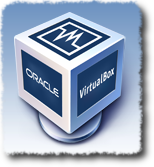 Finalmente è uscita la major update del prodotto di virtualizzazione per desktop di Oracle, VirtualBox 3.2.
Finalmente è uscita la major update del prodotto di virtualizzazione per desktop di Oracle, VirtualBox 3.2.
Nella nuova release troviamo nuove funzionalità e bugfix che affliggevano la precedente versione.
Da adesso VirtualBox prende ufficialmente il nome di Oracle VM VirtualBox (come saprete SUN è stata acquisita da Oracle il 20 aprile 2009)
Vediamo cosa c’è di nuovo (changelog):
- Experimental support for Mac OS X guests
- Memory ballooning to dynamically in- or decrease the amount of RAM used by a VM (64-bit hosts only)
- Page Fusion automatically de-duplicates RAM when running similar VMs thereby increasing capacity. Currently supported for Windows guests on 64-bit hosts
- CPU hot-plugging for Linux (hot-add and hot-remove) and certain Windows guests (hot-add only)
- New Hypervisor features: with both VT-x/AMD-V on 64-bit hosts, using large pages can improve performance; also, on VT-x, unrestricted guest execution is now supported (if nested paging is enabled with VT-x, real mode and protected mode without paging code runs faster, which mainly speeds up guest OS booting)
- Support for deleting snapshots while the VM is running
- Support for multi-monitor guest setups in the GUI for Windows guests
- USB tablet/keyboard emulation for improved user experience if no Guest Additions are available
- LsiLogic SAS controller emulation
- RDP video acceleration
- NAT engine configuration via API and VBoxManage
- Use of host I/O cache is now configurable
- Guest Additions: added support for executing guest applications from the host system (replaces the automatic system presimparation feature)
- OVF: enhanced OVF support with custom namespace to preserve settings that are not part of the base OVF standard
